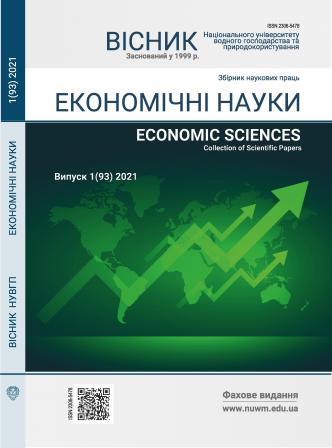ORGANIZATIONAL AND PEDAGOGICAL MECHANISM OF FORMATION DIGITAL COMPETENCE BY UNIVERSITY STUDENTS
DOI:
https://doi.org/10.31713/ve120211Keywords:
digital competencies, testing, educational trajectory, certificate.Abstract
The education system of Ukraine creates wide opportunities for a person, including the acquisition of general and professional competencies. One of the key is digital competence. Due to the rapid change in technology, the world economy is facing a shortage of people with digital skills. That is why most countries include digital skills training as part of the overall strategy for education and development of the national digital economy. The Ministry of Digital Transformation of Ukraine has created a portal "Diia" on which, with the help of the test "Tsyfrohram", citizens are given the opportunity to check digital literacy. The average assessment of digital literacy of students contrasts with the statistics of the use of information and communication technologies by young people. Studies have shown that significant use of computers, mobile devices and the Internet only contributes to digital skills at the operational level. Significant volume / time consumption of digital technologies cannot be considered as proof of digital competence. Young people are mostly consumers of other people's content, not the creator of new, self-created content. It is proposed to introduce testing of digital skills of first-year students and, depending on their level, to differentiate curricula and form individual learning trajectories. It is necessary to change the paradigm of acquiring digital skills: the transition from the traditional provision of content and information to accompany students in the creation of digital content, the development of practiceoriented projects. To achieve success, effective inter-sectoral interaction of stakeholders – government agencies, universities, IT companies, NGOs isneeded. The introduction of a targeted policy to improve digital competencesfor certain groups of people will also contribute to success.References
Про освіту : Закон України від 05 вересня 2017 р. № 2145-VIII. URL: https://zakon.rada.gov.ua/laws/show/2145-19 (дата звернення: 10.03.2021).
Про вищу освіту : Закон України від 01 липня 2014 р. № 1556-VIII. URL: https://zakon.rada.gov.ua (дата звернення: 10.03.2021).
Волобоєва І. О. Формування компетентнісної компоненти людських ресурсів (на прикладі банківських установ) : автореф. дис. ... канд. екон. наук : 08.00.07 / Київ. нац. екон. ун-т ім. Вадима Гетьмана. Київ, 2019. 22 с.
Макелвил В. Исследование компетенций. М. : Наука, 1982.
Демьянченко Н. В. Компетенция персонала как основа формирования конкурентных преимуществ организации в постиндустриальной концепции менеджмента. Вестник Белгородского университета потребительской кооперации «Кооперативное образование». 2016. № 4. С. 8–12.
Boyatzis Richard E. The competent manager: a model for effective performance / Richard E. Boyatzis. John Wiley & Sons. 1982.
URL: https://ec.europa.eu/jrc/en/publication/eur-scientific-and-technical-researchreports/digcomp-20-digital-competence-framework-citizens-update-phase-1-conceptual-reference-model (дата звернення: 10.03.2021).
Олешко А. А., Гороховець Є. В. Інформаційно-комунікаційні технології та людський розвиток. URL: http://www.investplan.com.ua/pdf/16_2019/4.pdf (дата звернення: 10.03.2021).
Van Deursen A. J. A. M., Helsper E., Eynon R., Van Dijk J. A. G. M. The Compoundness and Sequentiality of Digital Inequality. International Journal of Communication. 2017. No. 11. Pp. 452–473.
The Networked Readiness Index. URL: https://networkreadinessindex.org/wp-content/uploads/2020/11/NRI-2020-V8_28-11-2020.pdf (дата звернення: 10.03.2021).
URL: http://surl.li/klyz (дата звернення: 10.03.2021).
URL: https://osvita.diia.gov.ua/ (дата звернення: 10.03.2021).
URL: https://egap.in.ua/projects/doslidzhennia-tsyfrovoihramotnosti-ukraintsiv/ (дата звернення: 10.03.2021).
Van Deursen A. J. A. M., Van Dijk J. A. G. M. The Digital Divide Shifts to Differences in Usage. New Media and Society. 2013. No. 16. Pp. 507–526.

